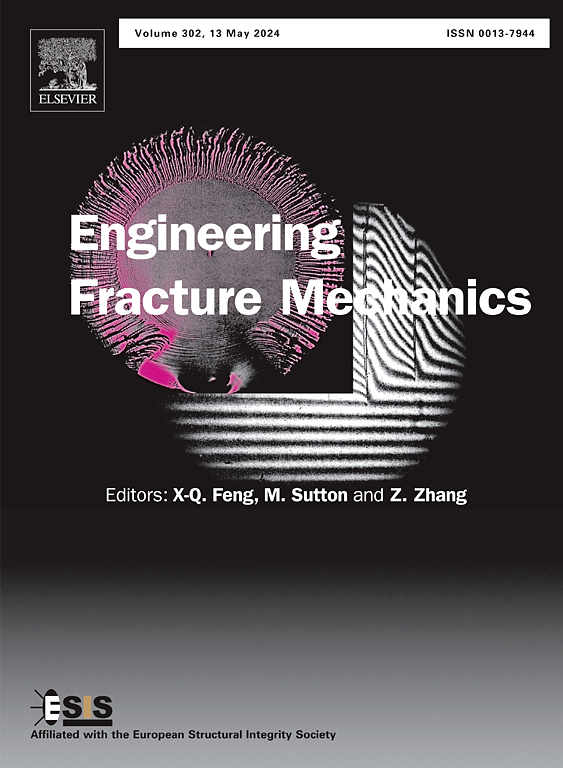Mixed-mode debonding mechanisms of Fe-SMA and CFRP bonded joints
IF 4.7
2区 工程技术
Q1 MECHANICS
引用次数: 0
Abstract
Adhesively bonding iron-based shape memory alloy (Fe-SMA) offers a solution to strengthen fatigue-prone metallic structures and prolong their service life. However, adhesive joints being susceptible to debonding failure, static failure was studied in Mode I, Mode II, and mixed-mode conditions, both experimentally and theoretically. The Fe-SMA material behaviour on the debonding mechanism was shown to be influential, reducing the bond capacity compared to carbon fibre reinforced composites (CFRP) strengthening material. So far the study of static joint failure was mainly confined to the debonding under the controlled lap-shear test conditions, a very common test for joint characterization and not on a component scale. The interaction between the structure end the repair was assumed negligible with the focus being on the interaction between the adhesive and adherend. In this manuscript, the static mixed-mode debonding is approached experimentally and theoretically at component scale. The residual tensile strength of a fully separated structural steel or aluminium element repaired with bonded Fe-SMA or CFRP strips of different width is measured. The repair eccentricity induced bending of the structural element is considered. Analytical and finite element modelling of the structural component are validated with the experiment and allow to perform the mode separation. It is shown that the deformation of the structural element affects the mode mixity. When the repair strip stiffness is high relative to the structural components stiffness, the Mode I contribution increased, negatively affecting the component residual strength. However, this effect was shown to be less important for Fe-SMA repair strips due to their material nonlinearity. These bonded repair were thus shown to be more resilient than their CFRP counterpart.
求助全文
约1分钟内获得全文
求助全文
来源期刊
CiteScore
8.70
自引率
13.00%
发文量
606
审稿时长
74 days
期刊介绍:
EFM covers a broad range of topics in fracture mechanics to be of interest and use to both researchers and practitioners. Contributions are welcome which address the fracture behavior of conventional engineering material systems as well as newly emerging material systems. Contributions on developments in the areas of mechanics and materials science strongly related to fracture mechanics are also welcome. Papers on fatigue are welcome if they treat the fatigue process using the methods of fracture mechanics.

 求助内容:
求助内容: 应助结果提醒方式:
应助结果提醒方式:


